Introduction
Specifications and Features
Announced in September 2014, the Zeiss Loxia 50mm f2.0 is a relatively fast manual-focus-only prime designed for the Sony full-frame E-mount, but which can also serve double duty on Sony’s APS-C mirrorless bodies, where it is the equivalent of a 78mm short telephoto lens.
Externally, this lens is made from metal for improved durability and the mount is weather-sealed, but it’s not clear if sealing is used elsewhere. The Loxia range, which currently includes just this lens and a 35mm f/2, eschews autofocus in favor of mechanical control. Nevertheless the Loxia lenses are able to detect movement of the focus ring electronically, and if selected, activate the camera’s electronic viewfinder magnifier option for improved focus accuracy. The Loxia models also include a manually-adjustable aperture collar complete with a “de-click” option (using a specifically-supplied tool) to reduce noise levels during video capture.
As a Zeiss Planar design (complete with T* coating), the 50mm has an optical construction consisting of 6 elements in total arranged in 4 groups, and focuses to 17.72” (45cm). With a 52mm filter diameter, the lens measures just 2.33 x 2.44” (59.2 x 62.1mm) and weighs 0.71 lbs. (320g). It is available for around $949 (USD).
Specifications
- 6 elements arranged in 4 groups
- F2 constant aperture
- Manual focus only
- Manual aperture collar
- 52mm filter diameter
- Weather-sealed mount
- 17.72” (45cm) minimum focus
Measurements: High sharpness
With a DxO Mark lens score of 39 points on the Sony A7R, the Loxia lens is an excellent performer overall. It has very high levels of sharpness, and even at the initial aperture, center sharpness is excellent. Stopping down brings improvements mainly in the outer field, though the centers increase a little as well.
However, there is some astigmatism noticeable mainly between f/2.8-5.6, restricting sharpness in the outer field. Peak sharpness is achieved at f/4, but stopping down to f/8-11 may be preferred in terms of sharpness across the field. Transmission is excellent, as there’s no deviation from the stated aperture value. Also impressive is the suppression of lateral chromatic aberration: not only is it very low, it’s limited only to the corners. Aside from the previously-mentioned astigmatism, which is the principal aberration, distortion is a little higher than average, as is vignetting, but both are still relatively low.
Carl Zeiss Loxia 2/50 Sony FE vs Sony FE Carl Zeiss Sonnar T* 55mm F1.8 ZA: Competitive optical quality
Intriguingly, the Zeiss Loxia’s main competition comes from the Sony Zeiss-branded FE Sonnar T* 55mm f1.8 ZA which, with a small $50 premium, is one of the best-performing lenses we’ve ever seen.
The two are quite closely matched, though the Loxia’s astigmatism means that the performance in the outer field (the periphery) isn’t quite up to the Sony between f/2.8-8 — in other words, most of the usable aperture range. The Sony is also slightly better at f/2 in the corners at least, but at f/11 the Loxia is ahead slightly, yet that’s being really picky. In most other respects the two perform almost identically — that is, with the exception of chromatic aberration, where the Loxia is slightly better-corrected across the field.
Carl Zeiss Loxia 2/50 Sony FE vs Carl Zeiss Distagon T* Otus 1.4/55 ZF.2 Nikon vs Sigma 50mm F1.4 DG HSM A Canon: High quality in a small package
Compared with the highly-regarded but somewhat pricey and much larger manual-focus Otus 1.4/55 on the Nikon D810, the Loxia is remarkably close in optical quality. As you might expect at around 4.5 x the price, the Otus is sharper at f/1.4 than the Loxia is at f/2.0. However the gap narrows considerably by f/2.8 and they’re very close at least centrally by f/4.
The Otus is hard to beat at the periphery and the Loxia doesn’t really match the Otus across the field until f/11. The Loxia has slightly higher distortion and chromatic aberration, but it’s a case of diminishing returns: few would be unhappy with this level of correction, especially with respect to lateral chromatic aberration.
At around the same price as the Loxia, the Sigma 50mm f1.4 Art series is certainly a contender at this level. We haven’t tested the Nikon-mount version, but we can get a good idea of its performance from testing the EF-mount model on the Canon EOS 5D Mk III. As high-grade model, it performs much like the Otus with regard to field flatness and uniformity. It is also very sharp. Even with the Canon’s lower-resolution sensor (22-Mpix vs. 36-Mpix), the Sigma matches the Sony combination at f/2.0 and is sharper in the outer two-thirds of the field, though not by much. At f/2.8, the Loxia overtakes the Canon and Sigma centrally, but the former’s astigmatism results in far less accurate rendering, and ultimately in lower sharpness in the outer field, and that remains so through to f/8. As for lateral chromatic aberration, the two perform similarly, which is impressive for the Sigma, given that it’s a high-speed f/1.4 design.
Conclusion
Anyone looking for a small, high-grade 50mm lens for the Sony A7-series cameras will find a lot to like about the Zeiss Loxia. Not only is it relatively small and lightweight compared with other lens options such as the 55mm Otus (which could be used with an adapter), it is a very good performer, not to mention a lot more accessibly priced. It’s still not cheap, of course, and somewhat bizarrely, it competes directly with the similarly-priced Sony-made Zeiss-designed 55mm f/1.8 which not only is a slightly better performer in the outer field, but is an autofocus model, which may appeal to a wider market. Still, the Loxia is a great lens, but choosing between it and the Sony model may come down to whether you prefer manual focus or not.


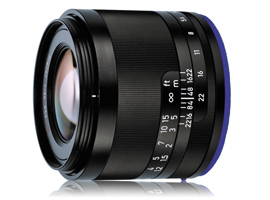



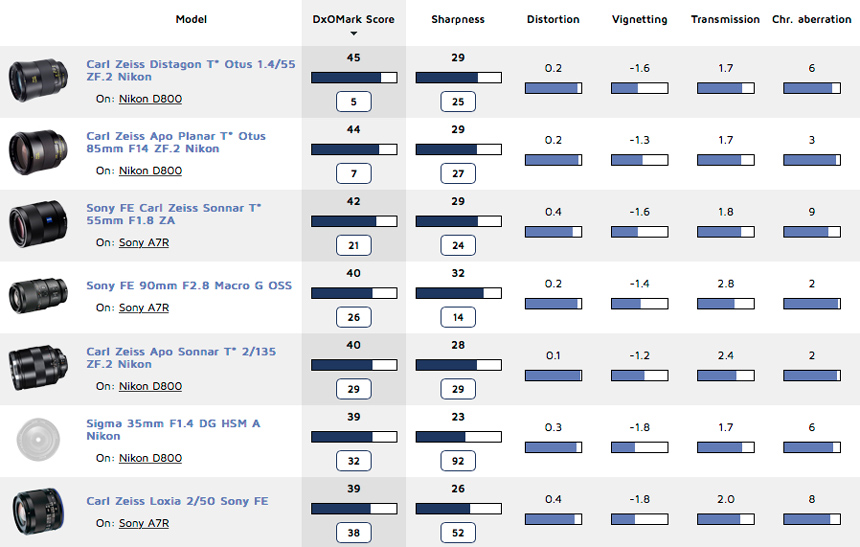
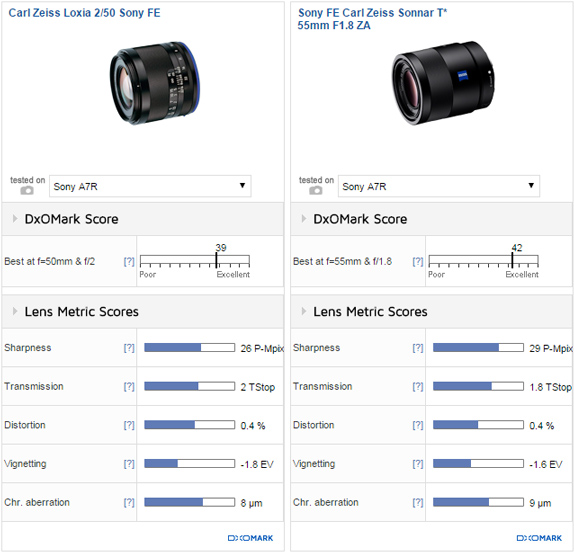
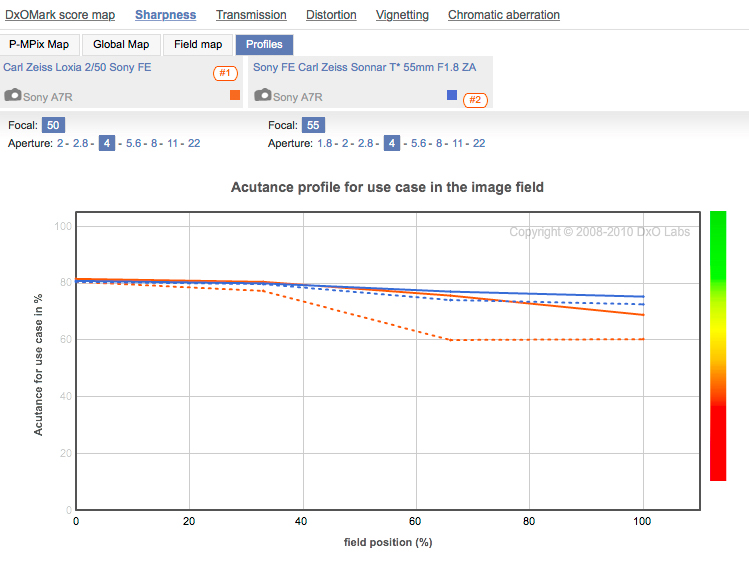
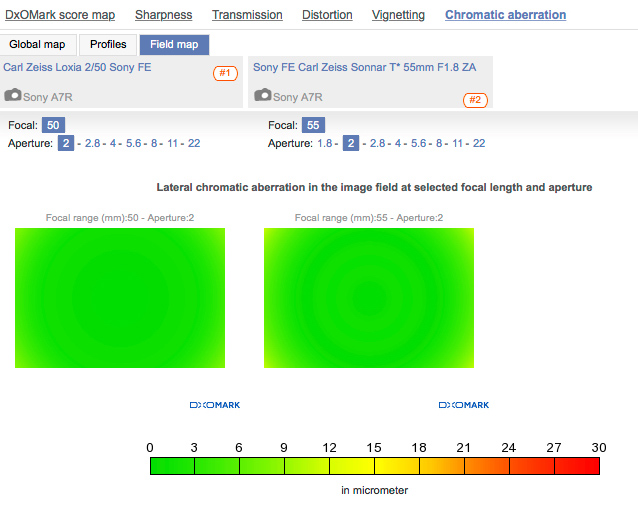
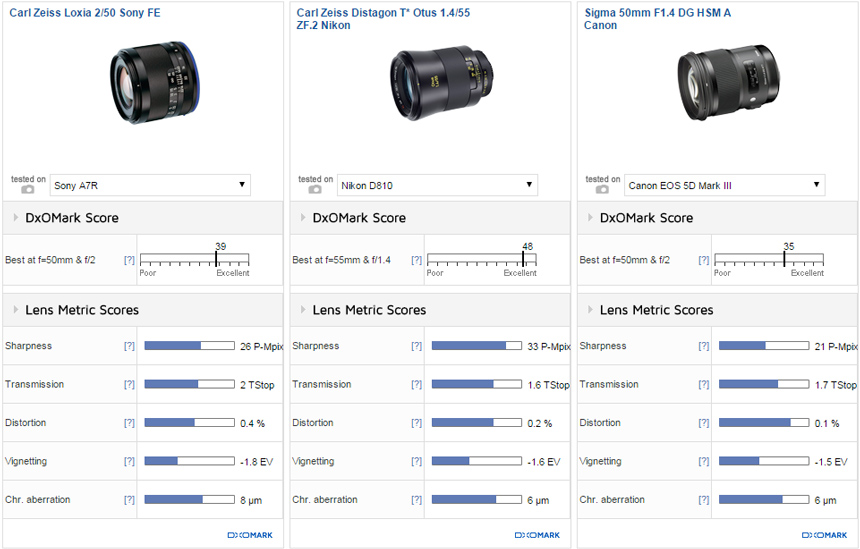
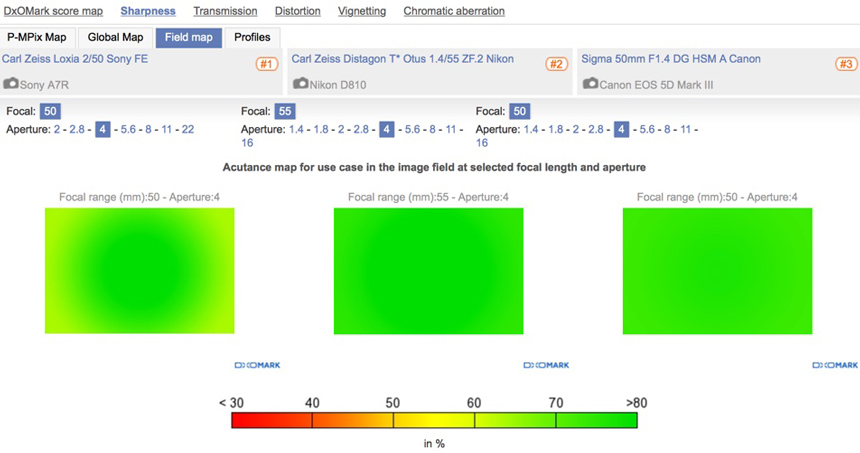
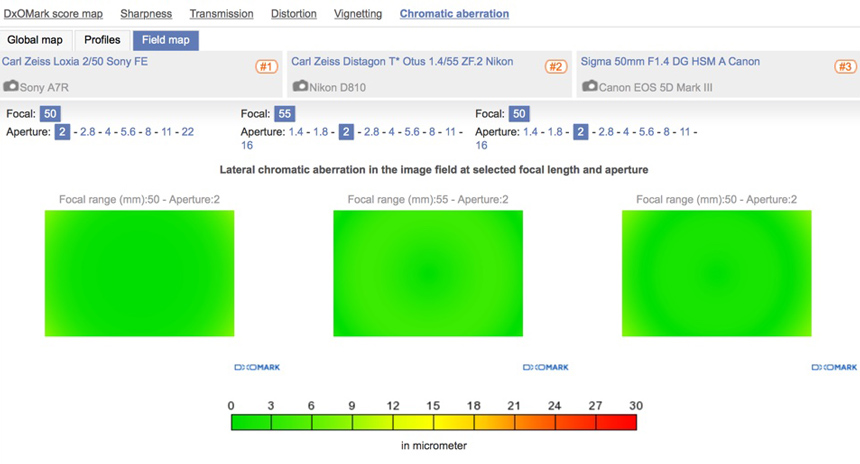
DXOMARK encourages its readers to share comments on the articles. To read or post comments, Disqus cookies are required. Change your Cookies Preferences and read more about our Comment Policy.